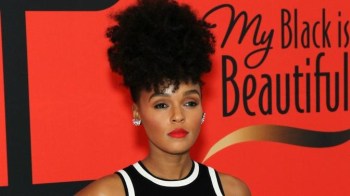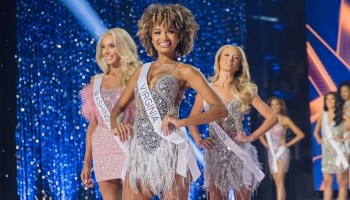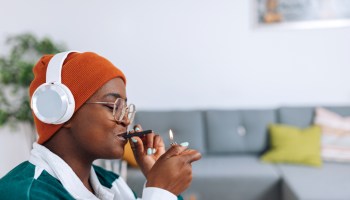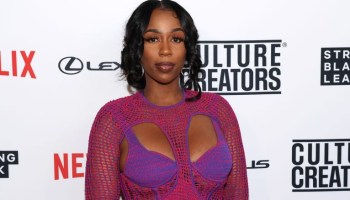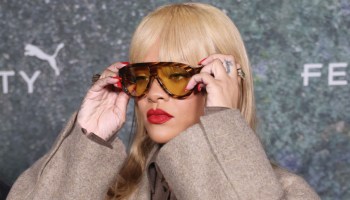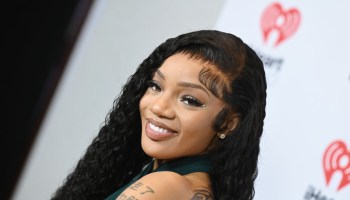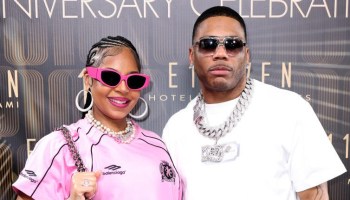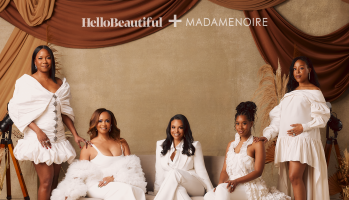It’s hard to believe that I’ve never worn a weave. Mainly because of the color of my natural hair and I refuse to dye it–but that’s a different story. I refuse to believe that I am the only girl out there who hasn’t experienced the greatness of 24 inches of hair flowing down her back. So I chatted with celebrity hair stylist for Love and Hip Hop New York, Shakira Smith who dished on everything you need to know about hair type, quality, length and color before investing top dollars in hair extensions.
MUST READ: WEAVE 101: HassadityHair Makes Looking Like Beyonce Easy! [Review]
TIP 1:
If you’re looking to invest in quality hair extensions, opt for virgin hair. This means that the hair comes from a single donor/person and has not been permed, dyed, colored, bleached or chemically processed in any way. Although Virgin hair is typically sold at a higher price point (anywhere from $80 to $500), it has a longer life span, is easy to maintain and can be washed, dyed, and styled for months on end.
When purchasing, the hair should come in a natural brown (or 1B) color. Also, don’t expect any two bundles of virgin hair to look exactly the same, since they may come from two separate donors – color, density and wave patterns may vary slightly, but the hair can be dyed and styled to look identical once installed.
Synthetic hair can be used to achieve most hairstyles and cost less than human hair ($30 to $80), but has a shorter life span and cannot stand extreme heat, dyes or chemicals.
TIP 2:
There are all sorts of different types of weaves, from Indian Virgin hair, to Brazilian, to Malaysian, to Chinese, to Russian – so how do you know which to choose? Each hair type has specific characteristics that will help you determine what to purchase, depending on the look you’re trying to achieve.
• Indian Hair: Indian hair is generally thick (but not heavy), wavy and full – a good option if you like to wear your hair both wavy and straight because both looks can be achieved with this hair type.
• Brazilian: Brazilian hair is thicker in density than Indian hair. Because of this, you may not want to use as many bundles to create a full look. Brazilian hair is also versatile – it may come straight, curly or wavy.
• Malaysian / Chinese / Russian / European: Though there are slight variations in each, Asian and European hair types are typically sleeker and straighter than Indian and Brazilian hair, and are lighter in density. These hair types are a good choice if you have fine hair and are looking for something that will blend well.
With that said, if you want thick, full hair or if you want to rock a weave that will hold a wave or curl, opt for Indian and Brazilian hair. If you want a sleeker, straighter look, try Malaysian or European hair types.
TIP 3:
The amount of hair that’s required to achieve whatever look you desire often depends on length… and the longer the hair, the more hair you’ll need because longer extensions are typically thinner in density. If you want to go super long (28 inches or longer) I suggest using anywhere from 3 to 5 bundles. For shorter styles, (12 inches to 26 inches) 2 to 3 bundles will do it.
TIP 4:
I suggest washing your extensions prior to installation. A lot of hair comes with chemicals already added to it, and you may want to avoid these products coming into contact with your natural hair. You can shampoo the hair, or you can co-wash, which means using a conditioner as a shampoo and rinsing. Also, be sure to brush your tresses through with a wide paddle brush while the hair is still dry, so that it doesn’t tangle when wet.
If you would like to soften your extensions prior to installation, try rubbing a small amount of fabric softener, like Downy through your tresses. Allow the softener to sit for about 15 to 20 minutes, rinse, and blow or air dry. You’ll notice a dramatic difference in the texture of your hair afterward, (and it will smell great too!)
TIP 5:
Avoid leaving your extensions in for longer than 6 to 8 weeks – when doing so, your natural hair could potentially lock and tangle, causing it to break. When you remove your extensions, be sure to wash and condition your natural hair to keep it healthy and strong.
TIP 6:
Try to avoid overuse of heat – just because your hair extensions can take it, doesn’t mean your natural hair can. If you choose to leave some of your natural hair out when wearing a weave, flat irons, curling irons and blow dryers can make your hair weak and brittle when used excessively, so avoid using these tools on a daily basis. Opt for rollers, rods and pin curls when attempting to achieve a wavy or curly look without the use of heat. Also, tie your hair at night to protect it, and keep it moisturized.
TIP 7:
If your extensions become dry or brittle from coloring or from overuse of heat, rub a dime-sized amount (or no more than a quarter-sized amount) of Moroccan oil or Argon oil through your tresses to soften the hair. Anything more than a quarter-sized amount will weigh down your hair, leaving a greasy, oily finish. Use a wide paddle brush to distribute the oil evenly, brushing from your tips to your roots. Also, stay away from products with alcohol, as this will also dry out your hair.
I think I am ready for my first install?! Do you have great hair tips for me? Share in the comments section below!
Follow me @gorgeousingrey
75 Sizzling Loc, Braids and Twists Styles
5 Reasons Your Hair Needs Amla Oil
LIKE HelloBeautiful On Facebook To Keep Up With The Latest Style & Beauty Trends!
